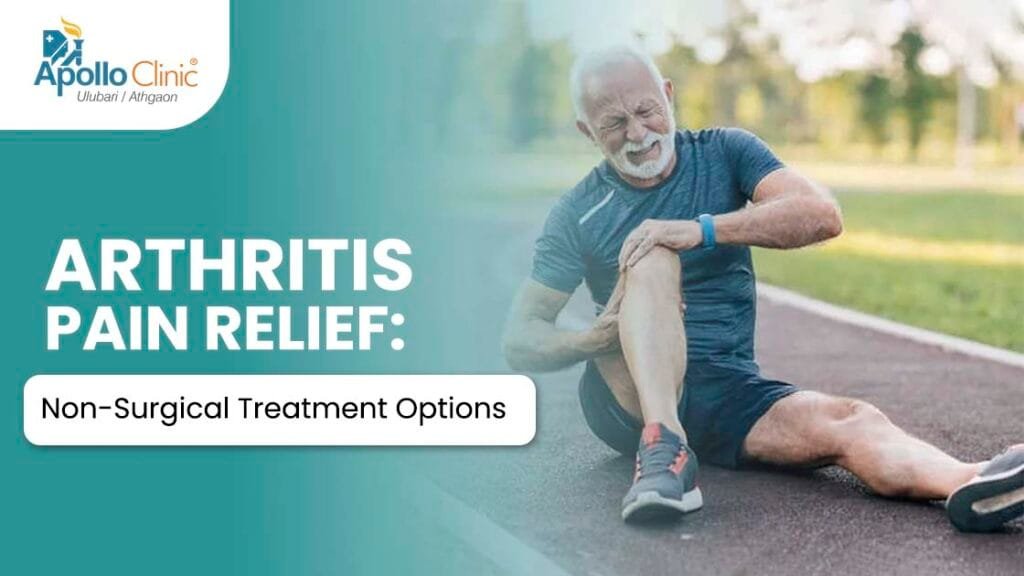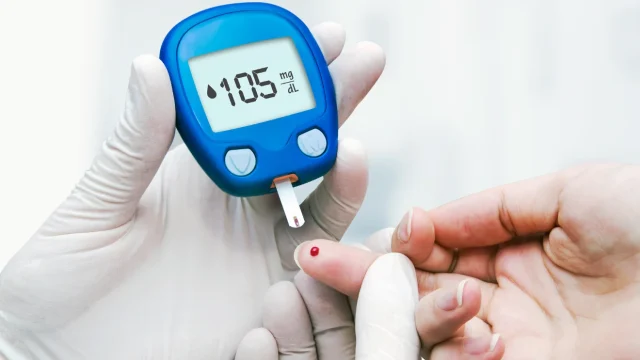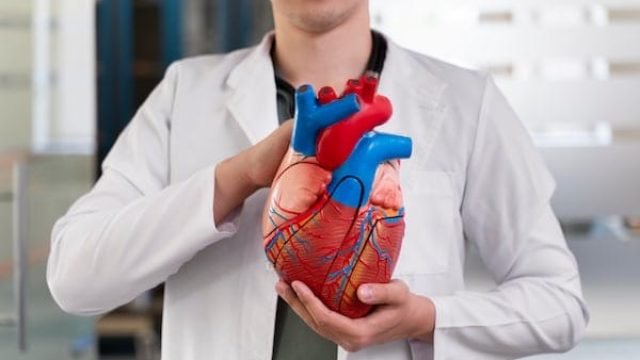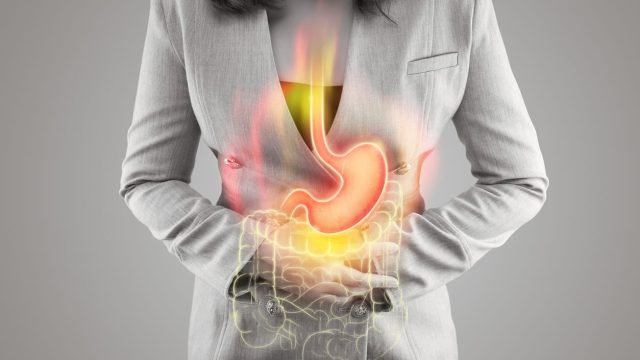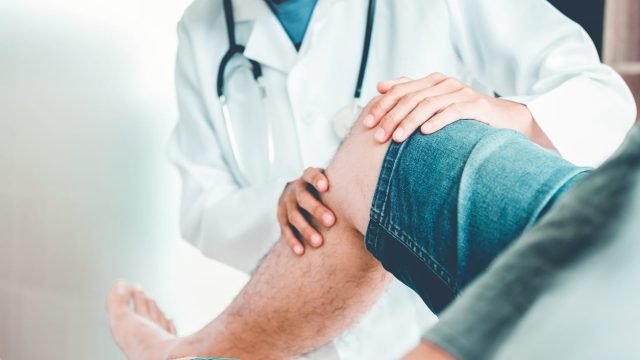Arthritis pain can be a relentless circumstance, debilitating your day-to-day routine. Joint pain relief is important for anyone with arthritis; constant pain can greatly diminish your quality of life. Fortunately, there are non-surgical treatment options that can help manage arthritis and provide pain relief without needing to go under the knife.
From the agony of climbing the stairs to what it is like to rise out of bed in the mornings, arthritis pain can interfere with daily living. Whether you endure a low-grade ache or intense and crippling pain, this long-term disease has the potential to affect every part of your life. For many, surgery is the sole solution for easing arthritis.
There are, nonetheless, an entire array of non-surgical methods that will alleviate arthritis pain. Here in this article, we will examine in great detail the options available so you can alleviate your arthritis pain and discover how to deal with your arthritis effectively.
As part of a treatment regimen aimed at easing and alleviating this pain, individuals who suffer from arthritis can attain pain alleviation, joint function, and an active life without requiring surgical procedures. Non-surgical approaches have been very popular and have become even more so based on their efficacy and reduced risk relative to surgery.
In our complete guide, we will be discussing some of the non-surgical arthritis pain relief techniques available, such as medication, physical therapy, lifestyle modification and alternative treatments. If you have osteoarthritis or rheumatoid arthritis, there is relief available that will make your pain disappear and enable you to live day-to-day.
What is Arthritis? Understanding the Condition
Arthritis is a phrase that refers to over 100 types of conditions that attack the joints, bringing pain, swelling, stiffness, and decreased motion. Arthritis is most often a progressive disorder that lasts for years, even a lifetime. Arthritis is often described as a condition of older people, but arthritis can affect individuals of all ages.
The two most frequent forms of arthritis are:
Osteoarthritis (OA)
This is the most prevalent type of arthritis, and it most often develops with age. Osteoarthritis occurs when the cartilage at the ends of bones deteriorates over time, and the bones begin to rub against each other. This may result in pain, swelling, and stiffness of the involved joints. Frequently involved joints are the knees, hips, and hands.
Rheumatoid Arthritis (RA)
Rheumatoid arthritis, or more commonly referred to as RA, is an autoimmune disease, in the sense that the body’s immune system is diverted against the lining of the joints, and such arthritis is multi-joint. Pain and stiffness are caused by the disease, resulting in inflammation at many joints. RA is progressive, and if not halted with treatment in time, it leads to joint deformity.
Both types of arthritis have the potential to result in crippling pain, reduced mobility, and a diminished overall quality of life. Arthritis cannot be cured, but treatment can effectively alleviate symptoms and halt the progression of the disease.
Non-Surgical Treatment Options for Arthritis Pain Relief
When it comes to managing your arthritis pain, surgery should always be your last option. In fact, there are many options available for treating arthritis pain that are nonsurgical. Let’s take a look at some of the most common and effective non-surgical options for treating arthritis pain.
1. Medications for Arthritis Pain Relief
Medications are often the initial treatment for arthritis pain. Various medication types are available that can decrease swelling, decrease pain, and enhance the function of your joints. You need to work closely with your healthcare provider to determine suitable drug choices based on the severity of your pain and the type of arthritis you have.
Non-steroidal anti-inflammatory Drugs (NSAIDs)
NSAIDs, or non-steroidal anti-inflammatory drugs, such as ibuprofen and naproxen, are often prescribed to alleviate inflammation and pain that comes from arthritis. They may also be bought over-the-counter (OTC), or your physician can provide a more potent dose if the need arises. Although NSAIDs have a strong potential for treating arthritis pain, long-term use should be watched for side effects, such as gastrointestinal issues or kidney problems.
Acetaminophen
Acetaminophen (Tylenol) is another over-the-counter drug that’s also prescribed for mild and moderate arthritis pain. Unlike NSAIDs, acetaminophen does not contain anti-inflammatories, but pain relief is an effective form of treatment. Also, it’s normally prescribed for individuals who cannot tolerate NSAIDs due to their possible side effects.
Corticosteroid Injections
Corticosteroid injections are also present for individuals suffering from moderate to severe arthritis pain. The injections are injected directly into the swollen joints to reduce swelling and alleviate pain. While effective, corticosteroid injections must be taken cautiously. Injecting too many materials can potentially harm the joint in the long run.
Disease-Modifying Antirheumatic Drugs (DMARDs)
DMARDs are usually used in rheumatoid arthritis. DMARDs alter the manner in which the disease influences the disease process and prevent further joint damage. Likewise, DMARDs may take months or weeks to have any effect on relief. Nevertheless, they are crucial in slowing the development of RA.
Like with any drug, there are side effects, so get a good treatment plan with your doctor that will be perfect for you.
2. Physical Therapy: A Crucial Part of Arthritis Pain Management
Physical therapy is non-surgical and has been proven to be effective in eliminating arthritis pain in the long term. You can get an exercise program specifically tailored to your personal needs from a licensed physical therapist. Physical therapy emphasises joint flexibility, muscle building, and mobility. Let’s examine a few characteristics of what you receive from physical therapy for arthritis.
Stretching Exercises
Stretching is key to maintaining joint flexibility and lessening stiffness. A physical therapist may guide you through targeted and focused stretches that concentrate on the involved joint or joints due to arthritis. Stretching regularly is a helpful technique to prevent the joint from tightening and stiffening, which will normally exacerbate the pain.
Strengthening Exercises
Having muscles around the strained joint become stronger can stabilize the joint and reduce the amount of stress on the joint. This is particularly important for those weight-bearing joints such as the knees and hips. Strengthening exercises will further assist your coordination and balance, which can counteract the fall and injury risks.
Heat and Cold Therapies
Most physical therapists will incorporate heat and cold therapy for the pain of arthritis. Heat helps to bring more blood flow to the area and relax tense muscles, while cold therapy will decrease inflammation and dull the acute pain of arthritis. These are also used in your physical therapy treatment.
Joint Protection Techniques
Patients are also educated on good posture and joint protective techniques for everyday activities. Using assistive devices like canes or braces may also help to reduce joint stress and preserve mobility.
3. Lifestyle Changes for Chronic Condition Management
Arthritis pain management is more than medicines and physiotherapy. Lifestyle is also part of pain management – this implies that changes in lifestyle are also important in controlling your arthritis pain. These changes will go towards making your overall health better and reducing symptoms.
Weight Control
Being overweight puts an extra strain on your joints, especially the hips, lower back, and knees. For each pound of body weight you shed, you alleviate pressure on your joints, lowering arthritic pain. Controlling or reaching a healthy weight is an important aspect of maintaining your arthritis, particularly if you have osteoarthritis.
Exercise
Exercise needs to be a foundation of your arthritis care. Low-impact exercises (cycling, swimming, and walking) enable you to maintain your joints moving and mobile and reduce stiffness. Exercise regularly will improve muscle strength and give more support to your joints. Theoretically, it could also have a positive effect on your mood and energy levels, which are usually lower as a result of chronic pain.
Diet and Nutrition
General health relies on a well-balanced diet, and it can be helpful for arthritis too. There are some foods with anti-inflammatory elements that can reduce joint pain. Foods rich in omega-3 fatty acids (such as fish like salmon) and antioxidant-rich foods (such as fruits and vegetables) are useful when handling inflammation.
Rest and Sleep
For conditions such as arthritis, sleep and the quality of your sleep become critical. Failure to get adequate rest can aggravate inflammation and pain, and can make it even harder to cope with symptoms. Try to have some routine in your sleep, and ensure your surroundings are comfortable for rest.
4. Alternative Therapies for Arthritis Pain Relief
In addition to traditional therapy, a number of people also seek alternative therapies for relief from arthritis pain. These may not replace conventional treatments, but can provide others who have arthritis with added relief.
Acupuncture
Acupuncture is a type of traditional Chinese medicine, where acupuncturists insert thin needles into specific points on the body. Some studies indicate that acupuncture may relieve arthritis pain by stimulating the body’s own pain-relieving capabilities. Not all people respond positively to acupuncture, but most find it a helpful addition to an overall plan for pain management.
Massage Therapy
Massage therapy can ease muscle tension, stimulate circulation and relieve arthritis pain. Regular massages can ease joint stiffness, enhance normal mobility and improve overall comfort. If you suffer from arthritis, try finding a massage therapist with experience in the treatment of chronic pain patients.
Supplements
Supplements like glucosamine and chondroitin are routinely used for joint health. They have also been demonstrated in some studies to lower the pain of joints as well as the speed at which osteoarthritis worsens. Turmeric and omega-3 fatty acids also possess anti-inflammation properties that can be advantageous to an arthritic individual.
Conclusion: Managing Arthritis Pain Effectively
The pain due to arthritis need not become your everyday nemesis. Trust us, with treatment options offered at Apollo Clinic that do not include surgery, the day shall never be too far away! Here, medications, physical therapy, changes in your lifestyle, as well as various other non-medicine approaches for treating this recurring disorder, are combined to implement an all-wholesome outlook while healing you.
Our skilled Rheumatologist doctor in Guwahati will assist you in creating a patient-centred care plan that will enable you to remain active and live life without the requirement for surgery.

Dr. Ankit Patawari


Dr. Kasturi Hazarika
If arthritis pain is interfering with your life, our expert Rheumatologists at Apollo Clinic will make your life pain-free. Call us at +91-9085612000 today to schedule your appointment!




